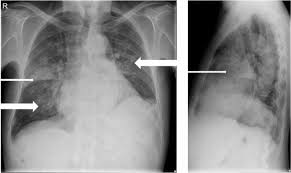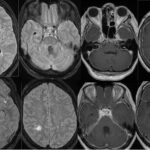Listeria endocarditis is a rare but severe infection of the heart’s inner lining and valves caused by Listeria monocytogenes. This gram-positive bacterium primarily affects immunocompromised individuals, the elderly, and those with underlying heart conditions. Although listeria infections commonly cause foodborne illnesses, in rare cases, they lead to life-threatening bloodstream infections, including endocarditis. Early diagnosis and prompt antibiotic treatment are essential for improving patient outcomes.

What is Listeria Endocarditis?
Listeria endocarditis occurs when Listeria monocytogenes enters the bloodstream and infects the endocardium (the inner layer of the heart), leading to inflammation and potential damage to heart valves. Unlike more common bacterial endocarditis caused by Staphylococcus or Streptococcus species, Listeria infections have unique clinical challenges and require specialized treatment approaches.
Causes and Risk Factors
Listeria endocarditis primarily results from the ingestion of contaminated food products, leading to systemic infection. The bacteria can enter the bloodstream and colonize heart valves, particularly prosthetic valves or previously damaged valves.
Key Risk Factors:
- Immunosuppression: Patients with HIV/AIDS, cancer, or organ transplants have a higher risk.
- Elderly Population: Individuals over 65 years are more susceptible.
- Pregnancy: Although rare, pregnant women may develop listeriosis, which can lead to complications.
- Prosthetic Heart Valves: Bacterial colonization on artificial valves increases risk.
- Chronic Diseases: Diabetes, kidney failure, and cardiovascular diseases predispose individuals to infection.
- Intravenous Drug Use: Repeated needle use can introduce bacteria into the bloodstream.
Symptoms of Listeria Endocarditis
Listeria endocarditis symptoms often develop gradually but can rapidly progress to life-threatening conditions. Common symptoms include:
- Persistent fever (above 38°C)
- Chills and night sweats
- Fatigue and weakness
- Shortness of breath
- Chest pain
- Heart murmurs
- Swelling in the legs or abdomen (due to heart failure)
- Neurological symptoms (due to septic embolism)
Severe cases can lead to complications such as stroke, septic shock, or multi-organ failure.
Diagnosis of Listeria Endocarditis
Early detection is critical for effective treatment. Diagnosis involves multiple tests to confirm Listeria monocytogenes infection and assess heart valve involvement.
Diagnostic Tests:
- Blood Cultures: Identifies the presence of Listeria bacteria in the bloodstream.
- Echocardiography: Transthoracic (TTE) or transesophageal (TEE) echocardiography detects vegetations on heart valves.
- Polymerase Chain Reaction (PCR): Identifies Listeria DNA from blood samples.
- Complete Blood Count (CBC): Detects signs of infection, such as elevated white blood cell count.
- Magnetic Resonance Imaging (MRI) or CT Scan: Assesses embolic complications affecting the brain or other organs.
Treatment of Listeria Endocarditis
Listeria endocarditis requires immediate and aggressive antibiotic therapy to prevent complications.
Antibiotic Therapy:
- Ampicillin or Penicillin G: First-line treatment, administered intravenously.
- Gentamicin: Used in combination for synergistic bacterial eradication.
- Trimethoprim-Sulfamethoxazole (TMP-SMX): Alternative for penicillin-allergic patients.
- Vancomycin: Sometimes used when other antibiotics are ineffective.
Duration of Treatment:
- Standard treatment lasts 4 to 6 weeks, depending on disease severity.
- Patients with prosthetic valves may require longer therapy.
Surgical Intervention:
In severe cases, surgical valve replacement may be necessary if:
- Antibiotic therapy fails to control the infection.
- The patient experiences severe valve destruction or heart failure.
- Large vegetations (infected masses) lead to embolic complications.
Complications of Listeria Endocarditis
Listeria endocarditis can lead to serious complications, including:
- Heart Failure: Resulting from valve dysfunction.
- Septic Embolism: Infected clots spreading to the brain, lungs, or other organs.
- Aneurysm Formation: Bacterial invasion of arterial walls leading to rupture.
- Multi-Organ Failure: Due to widespread infection and sepsis.
Prevention of Listeria Endocarditis
Although rare, preventing listeria infections is crucial, particularly for high-risk individuals.
Preventive Measures:
- Food Safety: Avoid unpasteurized dairy, raw meats, and processed deli foods.
- Hand Hygiene: Proper handwashing reduces the risk of contamination.
- Prompt Treatment of Listeriosis: Early intervention can prevent systemic spread.
- Regular Medical Check-ups: Especially for individuals with prosthetic heart valves or immunocompromised conditions.
Prognosis and Survival Rates
The prognosis of listeria endocarditis depends on early diagnosis and timely treatment.
- With prompt antibiotic therapy, survival rates range from 60-80%.
- Delayed treatment increases the risk of heart failure and death.
- Surgical intervention significantly improves outcomes in complicated cases.
Listeria endocarditis is a rare but life-threatening infection that requires urgent medical attention. Early diagnosis, aggressive antibiotic treatment, and, in some cases, surgical intervention are crucial for survival. High-risk individuals should adopt preventive measures to reduce the likelihood of infection. Healthcare professionals must remain vigilant to promptly identify and manage this condition to improve patient outcomes.

